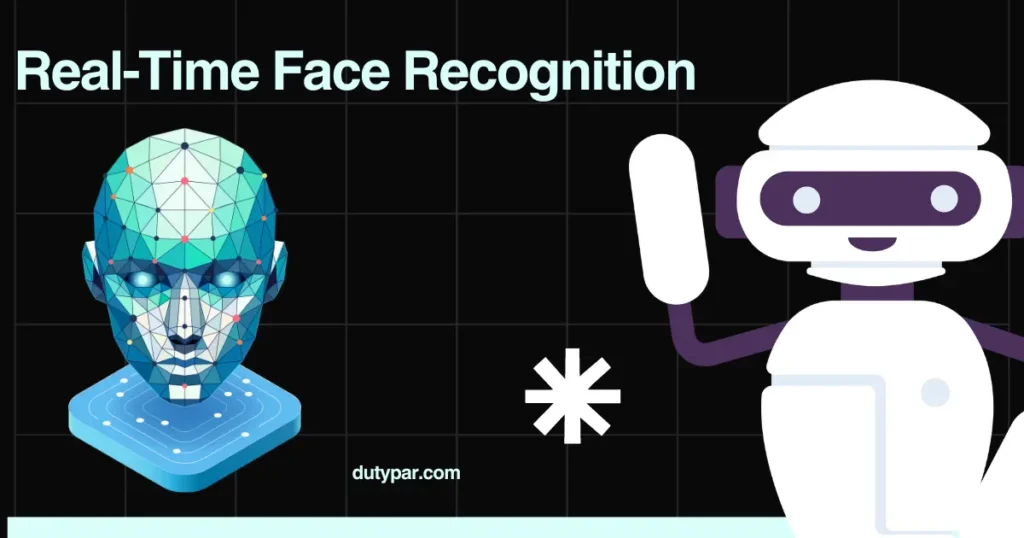
Table of contents
- What is a Smart Attendance System Using Face Recognition?
- How Does a Smart Attendance System Using Face Recognition Work?
- Benefits of Smart Attendance Using Face Recognition
- Challenges in Implementing a Smart Attendance Using Face Recognition
- Real-World Applications of Smart Attendance Systems Using Face Recognition
- The Future of Smart Attendance Systems Using Face Recognition
- Conclusion
Attendance management is a crucial part of any organization, whether it’s a school, college, or business. Traditional methods like manual registers or card-based systems are becoming outdated due to inefficiency and errors. Today, the focus is shifting towards a smart attendance system using face recognition, a technology-driven approach that offers precision, efficiency, and security. This article explores how smart attendance systems using face recognition work, their benefits, challenges, and their future in various sectors.
What is a Smart Attendance System Using Face Recognition?
A smart attendance system using face recognition is an automated method that uses artificial intelligence (AI) and computer vision to identify and verify individuals’ faces for attendance purposes. Unlike older systems that rely on badges or fingerprint scanning, facial recognition attendance systems use cameras to capture images of people’s faces and match them with pre-stored data. This technology offers a seamless and contactless experience, making it ideal in settings like schools, colleges, offices, and public transportation.
How Does a Smart Attendance System Using Face Recognition Work?
The core technology behind a smart attendance system using face recognition involves several steps:
- Face Detection: The system captures an image using a camera and detects the faces in the frame. This process involves identifying facial features such as the eyes, nose, mouth, and chin.
- Feature Extraction: Once a face is detected, the system extracts unique features like the distance between the eyes, the shape of the nose, and the contour of the jawline. These features are then converted into a digital format, known as a faceprint.
- Face Matching: The extracted faceprint is compared against a pre-existing database of authorized individuals. If the system finds a match, it records the attendance. If not, it may send an alert or deny access.
- Data Storage and Management: The data is then securely stored in a centralized database that can be accessed by authorized personnel for monitoring and reporting.

Benefits of Smart Attendance Using Face Recognition
Implementing a smart attendance system using face recognition brings several advantages:
- Accuracy and Efficiency: Traditional methods like manual registers or swipe cards are prone to errors and can be manipulated. Face recognition technology eliminates such issues by providing accurate data without human intervention.
- Time-Saving: This technology speeds up the process of taking attendance. There is no need to line up or swipe cards; a simple glance at the camera is enough. This is particularly beneficial in large organizations or educational institutions where managing attendance can be time-consuming.
- Enhanced Security: A smart attendance system using face recognition can also serve as a security tool. It ensures that only authorized personnel or students are present in the facility, reducing the chances of unauthorized access.
- Touchless Experience: The COVID-19 pandemic highlighted the need for contactless solutions. This system provides a hygienic way of recording attendance without touching any surfaces, reducing the risk of contamination.
- Easy Integration: Most face recognition systems are compatible with existing security and HR management systems, making them easy to integrate without major changes.
- Data Analytics: Organizations can use data collected from attendance systems to generate insightful reports. This can help in understanding employee or student behavior, managing absenteeism, and improving operational efficiency.
Challenges in Implementing a Smart Attendance Using Face Recognition
While the benefits are compelling, there are also challenges when deploying a smart attendance system using face recognition:
- Privacy Concerns: The use of facial recognition technology raises significant privacy concerns. People may feel uncomfortable knowing their facial data is stored and analyzed. Proper regulations and data protection measures are essential to address these concerns.
- High Initial Cost: Setting up a smart attendance system using face recognition can be expensive. High-quality cameras, servers, and software come with a price tag. However, the long-term benefits often outweigh the initial costs.
- Technical Issues: Factors like lighting, camera quality, and facial obstructions (e.g., masks, sunglasses) can affect the system’s accuracy. It is essential to ensure optimal conditions for capturing and processing facial data.
- Bias and Errors: Some systems may have biases that lead to incorrect identifications, especially among different ethnic groups. Continuous training of the AI model is necessary to minimize errors.
- Dependence on Technology: Over-reliance on a technological system can pose risks, especially if there are technical failures or power outages. It’s crucial to have backup systems in place.
Real-World Applications of Smart Attendance Systems Using Face Recognition

Various sectors are adopting smart attendance systems using face recognition due to their efficiency and reliability:
- Educational Institutions: Schools and colleges are using these systems to manage attendance, track student behavior, and ensure security within the campus. The contactless feature is particularly useful in maintaining hygiene in a post-pandemic world.
- Corporate Offices: Many companies have integrated face recognition attendance systems into their HR management software. This helps in maintaining accurate records, improving productivity, and managing employee attendance without hassle.
- Healthcare Facilities: Hospitals and clinics use these systems to ensure that only authorized personnel have access to certain areas, thereby enhancing security and reducing unauthorized access.
- Public Transportation: Some countries have started using face recognition systems in public transportation to manage crowds, verify tickets, and ensure security.
- Retail and Shopping Centers: Malls and retail stores use these systems for security purposes, as well as for monitoring customer behavior and preferences.
The Future of Smart Attendance Systems Using Face Recognition
The future of smart attendance systems using face recognition looks promising, especially with advancements in AI, machine learning, and data analytics. As the technology matures, we can expect it to become more accurate, faster, and more affordable. Here are some future trends to watch for:
- Integration with Other Technologies: Future systems will likely integrate with other technologies like IoT (Internet of Things), cloud computing, and blockchain to provide a more secure and efficient experience.
- Improved Algorithms: Continuous improvements in AI and machine learning algorithms will reduce errors, biases, and false positives, making these systems more reliable.
- Greater Customization: Companies will offer more customized solutions to meet specific needs, whether it’s for a school, corporate office, or healthcare facility.
- Increased Adoption in Public Spaces: As facial recognition technology becomes more accepted, it will likely be adopted in more public spaces like airports, metro stations, and sports arenas to enhance security and manage crowds efficiently.
- Enhanced Data Privacy: Governments and organizations will need to develop stringent data protection regulations to address privacy concerns and build public trust in the technology.
Conclusion
A smart attendance system using face recognition is transforming the way organizations manage attendance and security. With its accuracy, efficiency, and touchless operation, it offers a modern solution to traditional attendance woes. However, like any technology, it comes with challenges that must be addressed, including privacy concerns, costs, and potential biases. As the technology evolves, we can expect these systems to become an integral part of various sectors, ensuring a secure and efficient environment for all.
By understanding both the benefits and challenges, organizations can make informed decisions about implementing a smart attendance system using face recognition, paving the way for a smarter and more secure future.
